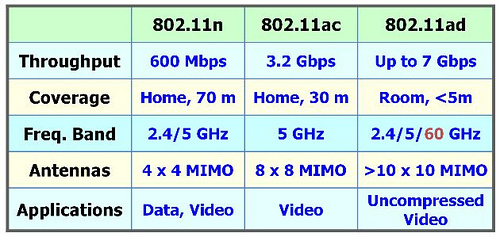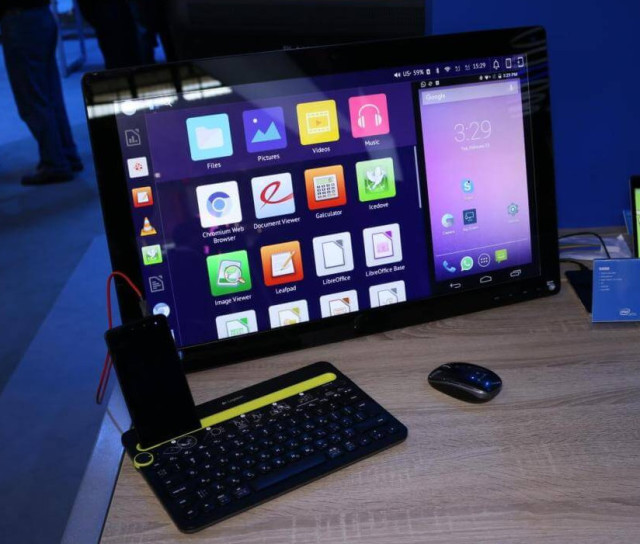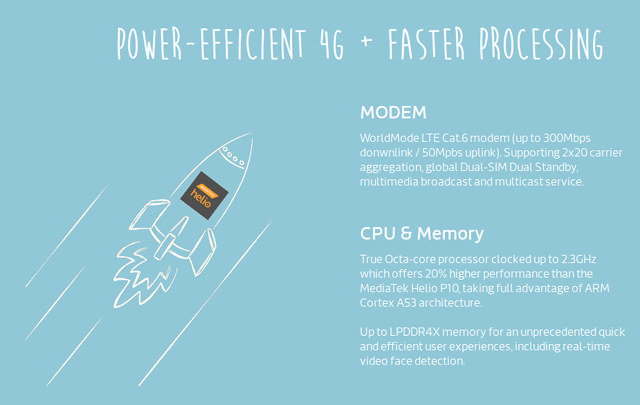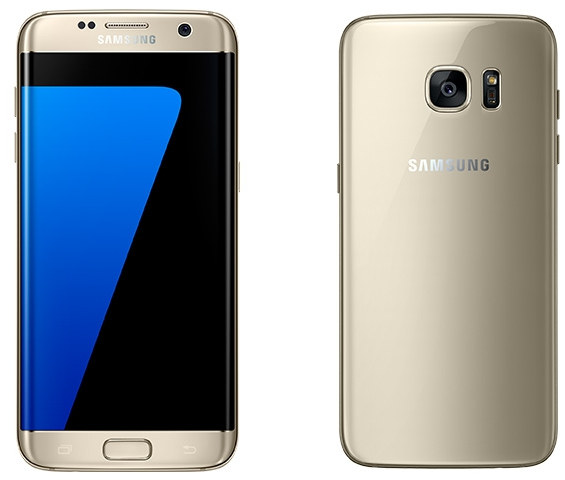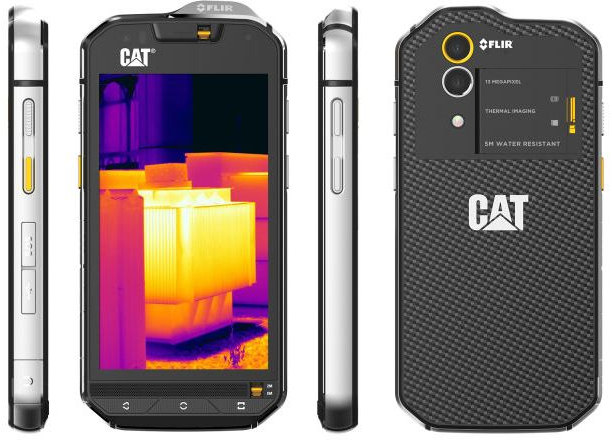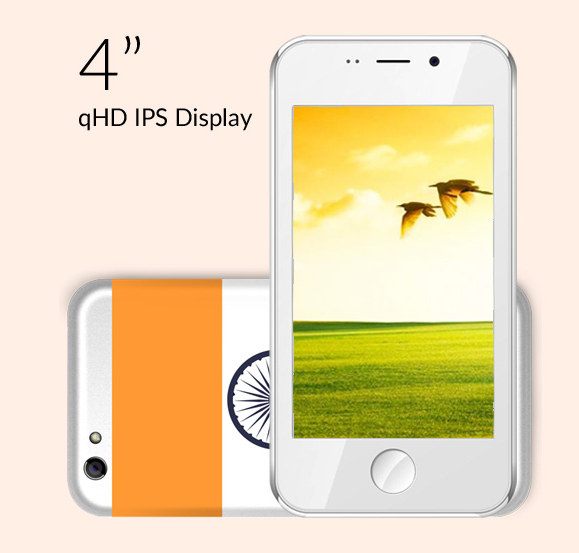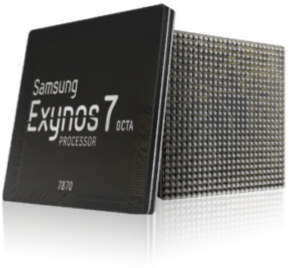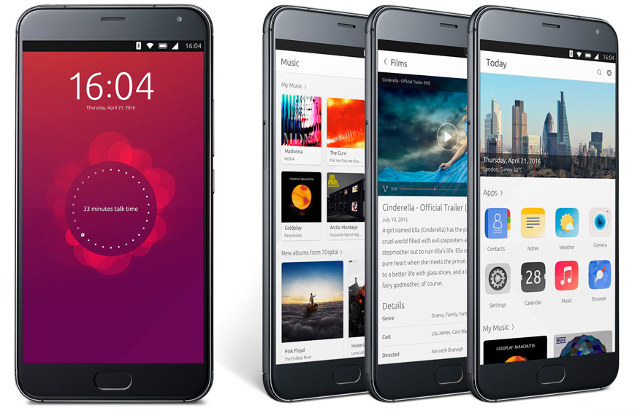802.11ad is the latest and fastest WiFi standard working in the 60 GHz band and delivering up to 7 Gbit per second data transmission rates. The 60 GHz frequency band offers both advantages and disadvantages because it does not penetrate through walls nor water, meaning it can only be used within a room limiting the range, but at the same time it’s more secure since it cannot be snooped from the outside, and for people who worry about health effects it does not penetrate the human body. 802.11ad routers will also be able to switch to 2.4 and 5.0 GHz frequency bands in order to go through walls. The table above nicely summarize the key features of 802.11ad over 802.11ac and 802.11n, however the throughput row shows the theoretical maximum throughput, but in practice, using 802.11ac as example, clients are often limited to 433 or 866 Mbps, and distance and […]
Intel Showcases Mobile & Desktop “Convergence” with Android and Debian Linux on an Atom x3 Smartphone
MaruOS is an operating system combining Android and Debian Linux that – until recently – was developed by a single developer for Qualcomm Snapdragon 800 (ARM) based Nexus 5 smartphones, and use Android on the go, while switching to Debian when the phone is connected to a larger display and a keyboard and mouse. It turns out Intel had the same idea, and they worked on an Intel Atom x5 smartphone with 2GB RAM running both Android Lollipop in mobile mode, and Debian Linux as desktop mode when connected to a keyboard dock. Intel does not talk about convergence, but instead calls it “Big Screen Experience”. Based on the picture above taken by WinFutures.de at Mobile World Congress 2016, it appears you can also display both Debian and Android operating systems side-by-side if you wish to. They’ve also shot a video (in German) showing the smartphone run Android, and after […]
Mediatek Helio P20 Octa-core Cortex A53 SoC is Manufactured with 16nm Process, Supports LPDDR4X Memory
Mediatek has gotten used to releasing many different processors, often with one slight differences such as support for different screen resolutions, but the company’s latest Helio P20 octa-core Cortex-A53 processor, despite looking pretty similar to Helio P10 (MT6755) and X10 (MT6795), does confirm lower process nodes are now available in entry-level to mid range parts since it’s manufactured using a 16nm process, and the application processor also supports up to 6GB LPDDR4X memory which drops the voltage from 1.1V to 0.6V for even lower power consumption. LPDDR4X is said to provide 70% more bandwidth and 50% lower power consumption compared to LPDDR3. MediaTek Helio P20 (LP4) specifications: CPU – 8x ARM Cortex-A53 @ up to 2.3GHz GPU – Mali-T880MP2 @ 900MHz Memory – Up to 2 x LPDDR4X 1600MHz (up to 6GB) + 1x LPDDR3 933Mhz (up to 4GB) Storage – eMMC 5.1 flash Display IF – 2x MIPI DSI […]
Samsung Unveils Galaxy S7 and Galaxy S7 Edge Smartphones with Exynos 8890 or Snapdragon 820 Processor
As Mobile World Congress 2016 is about to start, Samsung has officially announced Galaxy S7 and Galaxy S7 Edge smartphones powered by either Qualcomm Snapdragon 820 in the US, or the company’ own Exynos 8890 in the rest of the world. Let’s see if beside faster and more efficient processors, the company has brought some other innovation, or if it is just another boring smartphone release. Both smartphones basically share the same specifications, and the main difference is that Galaxy S7 edge has a curved screen. SoC Samsung Exynos 8 Octa (Exynos 8890) octa core processor with four Exynos M1 core @ 2.3GHz + four Cortex A53 cores @ 1.6Ghz, and Mali-T880MP12 GPU, manufactured using 14nm process. Qualcomm Snapdragon 820 quad core Kryo processor with two cores @ up to 2.2GHz, and two cores @ up to 1.6GHz, an Adreno 530GPU, an Hexagon 680 DSP, and a 14-bit Spectra ISP. System […]
Cat S60 Rugged Android Smartphone Includes a Thermal Camera
Caterpillar is better for its construction machinery and equipment, but the company has also been making rugged smartphones, some of them strong enough to be run over by 4+ tons machines, for several years, and they’ve now unveiled Cat S60 smartphone powered by a Qualcomm Snapdragon 617 octa-core processor and including both a 13MP camera and a FLIR thermal camera on the back of the device. Cat S60 preliminary specifications: SoC – Snapdragon 617 octa-core processor System Memory – 3GB RAM Storage – 32GB flash Display – 4.7” HD capacitive multi-touch with auto wet finger & glove support; 1280 x 720 resolution; Gorilla Glass 4 Connectivity – 4G LTE Camera 13MP main camera with dual flash 5MP front-facing camera FLIR thermal camera app with MSX technology capable of detecting temperature up to 15 to 30 meters Battery – 3,800 mAh IP Rating – N/A, but the phone can be used […]
Freedom251 Smartphone Sells For about $4 in India
Electronics is getting pretty cheap those days with ESP8266 WiFi modules for $2 shipped, Raspberry Pi Zero for $5 (in theory), Orange Pi One for $10, 4K TV boxes for $30 and so on. But a $4 smartphone? No way! But that’s about the price of Freedom251 smartphone that is sold by a company called Ringing Bells for 251 Rupees, or about $3.67, plus 40 Rupees for shipping ($0.58) to India only. Freedom251 specifications: SoC – Quad core processor @ 1.3 GHz System Memory – 1 GB RAM Storage – 8 GB flash + micro SD slot up to 32GB Display – 4″ touchscreen IPS display with 960×540 resolution Connectivity – WiFi, Bluetooth, GSM and 3G Camera – 3.2MP rear camera, 0.3MP front camera Audio – 3.5mm audio jack, FM radio Sensors – Proximity sensor Battery – Removable 1,450 mAh battery The phone runs Android 5.1, and come pre-installed with […]
Samsung Introduces Exynos 7870 Octa-Core Processor for Mid-Range Smartphones
Usually the higher the model number, the faster the processor, but not with Samsung, as the company’s new Exynos 7870 processor will feature eight ARM Cortex A53 cores @ 1.6 GHz coupled with an ARM Mali-T830MP GPU. It will be manufactured with 14nm FINFET process which should reduce power consumption by 30% compared to 28nm process. The processor also include an LTE Cat.6 2CA Modem that supports 300Mbps downlink speed and FDD-TDD joint carrier aggregation. Multimedia capabilities include 1080p 60fps video playback, 1920×1200 display resolution, and 16MP front or camera support (8MP in dual camera configuration) via its image signal processor (ISP). Exynos 7870 processor will also integrate a GNSS solution that delivers fast time-to-first-fix (TTFF) feature. In the recent pas, low and mid-range SoC were usually manufacturer with 28nm process due to the high cost of 14nm process, but those costs must have come down dramatically, after Snapdragon 625 […]
Meizu PRO 5 Ubuntu Edition Smartphone is Powered by Exynos 7420 Processor, Does NOT Support Desktop Mode Yet
So far most smartphones with alternative operating systems had rather low-end to mid-end hardware specifications, but according to OMG! Ubuntu!, Canonical and Meizu are about to change that, as they should be about to launch an Ubuntu Edition of Meizu PRO 5 smartphone with an Exynos 7420 octa-core Cortex A57/A53 processor coupled with 3 to 4GB RAM, 32 to 64GB storage., and a 5.7″ display with 1920×1080 resolution. The device will support convergence, meaning it could work in mobile or desktop mode, just like the recently announced BQ Aquaris M10 tablet. [Update: Finally, the USB-C port on Meizu PRO 5 does not support external display, so no convergence, unless Canonical decides to implement convergence over Miracast…]. Meizu PRO 5 Ubuntu Edition specifications: SoC – Samsung Exynos 7 Octa (Exynos 7420) octa core processor with 4x Cortex A57 core @ 2.1GHz + 4x Cortex A53 cores @ 1.5Ghz, and Mali-T760 MP8 GPU […]


